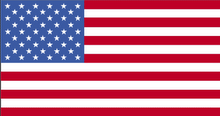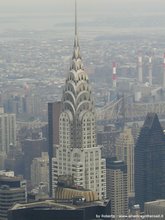Read original... The Museum of Comedy is inside the offices of A. Ottavino Corporation, near a cemetery. Photographs by Ángel Franco/The New York Times
The Museum of Comedy is inside the offices of A. Ottavino Corporation, near a cemetery. Photographs by Ángel Franco/The New York Times
There is actually a Museum of Comedy in New York City. Granted, its Queens location is a visual punch line waiting for a rim shot: tucked inside an Ozone Park stone-cutting business across the street from an overgrown and under-appreciated cemetery.
Yet, there it was on the GPS screen, listed under “Attractions” on Pitkin Avenue. Mind you, Pitkin Avenue — at least the part that ran a few blocks away over the border in East New York — was hardly a laughing matter 20 years ago, when drug-fueled homicides were rampant. And given the cemeteries on the Queens side, you’d expect to see mausoleums, not museums.
But inside the offices of A. Ottavino Corporation — a place that looks like a wood-paneled throwback to the 1960s — was an actual, though modest, collection of posters and portraits honoring Groucho Marx, Abbott and Costello, Lucille Ball and John Cleese, among others.
Some cartoons and sketches are perched on ledges, while a George Burns doll is displayed under an array of family photos. (There are also stone samples, technical drawings and non-funny catalogs through much of the space.)
“Welcome to Galleria Boobatz,” said Sallie Elkordy, who presides over this tiny collection housed at the company her grandfather founded in 1913. “My father used to say that everything I do was ‘boobatz,’ because he was trying to get me to get serious about the stone business. He’d ask me, ‘You know the root of ‘boobatz?’ I’d tell him, ‘Um…atz?’”
The museum displays a fraction of the collection she built over the years. She keeps most of it in storage, from movies and books to posters and dolls (including a talking Dennis Miller action figure, which is what boys call dolls.)

Sallie Elkordy, founder of the Museum of Comedy, which is at the company her grandfather founded in 1913 in Queens.
Photographs by Ángel Franco/The New York Times
Ms. Elkordy incorporated the museum in 2001, not so much to enshrine the comics who inspired and delighted her, but also to raise money to pay the many comics who have helped her put on hundreds free shows in hospitals and homeless shelters throughout the city. She figured if she set up a museum, she could accept donations through a nonprofit corporation,
“I always wanted a museum of comedy so I could have an organization that would let me pay people,” she said. “This is my only real concern. I have more shows coming up. The coffers are dry, and I’d like to raise money to pay these comics without having to keep dipping into my pockets.”
She is still footing the bill. Even the Web site she set up for the place is more or less dormant, since she’d rather spend her budget on the shows.
Her relatives were stone cutters. She was a cutup. Growing up in Brooklyn, Long Island, and Queens, she said she liked all things silly. It came in handy when early in grammar school she was bused to another school.
“Anybody who’s been bused knows that’s when the comedians emerge,” she said. “There’s this stress of people from different schools coming together and being territorial. Other kids were terrified, but I wasn’t. A sense of humor had everything to do with that.”
Fast forward to graduate school, where she was studying architecture. She kept a collection of New Yorker cartoons taped to her door. People laughed at them. She liked that. She liked even better the man who gave her the magazine subscription — Mohamed Elkordy, a fellow student who became her husband.
He went into her family’s business. She would too, eventually. By 1992, a decidedly unfunny fall led her to comedy. She broke her right ankle at a New Year’s Eve party and was homebound, with two young children, for eight months. That kind of thing gives you time to think. She declared 1993 would be the year of bold moves.
“I wanted to do the boldest thing I could and I decided stand-up comedy would be it,” she said. “I remember knowing hilarious people who would rock your world. Then they’d get up on stage and freeze in the spotlight. The first time I did that and people laughed, where they’re not supposed to laugh, threw me for a loop.”
When she was able to get around, she took a comedy course, using it to sift through jokes she had written. Late night open microphone nights at comedy clubs were hard, because of her children at home. Instead, she performed at fund-raising events for charities. In time, she developed a knack for getting other comics to help out. Early gigs included several at the United Nations, though she decided by the mid-1990s to stage shows at hospitals and shelters where spirits, and entertainment budgets, were low.
“It’s been downhill ever since,” she said. “A lot of church basements.”
Bill McCarty, a comedian and actor, is among her regular performers.
“My attitude was I’d love to do a show for charity if someone asked me,” he said. “Sallie saw me at the Comic Strip and asked me.”
The sites are unusual, he admitted.
“Usually her shows have a two-drip minimum,” he said. “There’s usually somebody on meds. Besides me.”
Brian Kiley, a writer for Conan O’Brien and his just-completed New York show, said the audiences at her shows have challenged his preconceptions about people and comedy. He has discovered he has a lot more in common with some people than he imagined. Next Tuesday, he will be honored at a site where he has been a favorite — United Cerebral Palsy of New York City on East 23rd Street.
“That’s a tough room, because it’s very hard for these people to respond, physically,” he said. “You think you’re not doing well. The first five times I went there, I don’t know if I got a laugh. They were just staring at me. Then at the end of the year they said they wanted me back because I was their favorite comic.”
And sometimes being funny will drive away an audience, as he found at one hospital.
“A guy had just had surgery for stomach cancer,” Mr. Kiley said. “He left, but waited for me outside when I finished. He said: ‘I’m sorry, but it hurt to laugh. You were making me laugh so I had to go.’ As a comic, you’re flattered, because your dream is to hurt people as much as possible.”
Ms. Elkordy’s dream started with hopes of being in the spotlight. Yet in hospitals and shelters, she has sometimes gone telling one-liners from bed to bed or person to person. She knows that sometimes the hardest crowd consists of one. In her case, it was her father, A. George Ottavino.
“He would bust my chops,” she recalled. “He was so funny, everything I said, he had to top. He’d say something and it was like a rim shot afterward. He was so entertaining, yet he was so serious.”
Yet, her father’s portrait sits next to her own pantheon of comics, set on a narrow ledge in the office. Maybe it would be nice to have a museum after all.
“We need a real building,” Ms. Elkordy said. “We need encasements for the dolls and frames for the pictures so people can see them. And it’d be nice to have a building located where people can see them, too. Not across the street from a cemetery.”





































